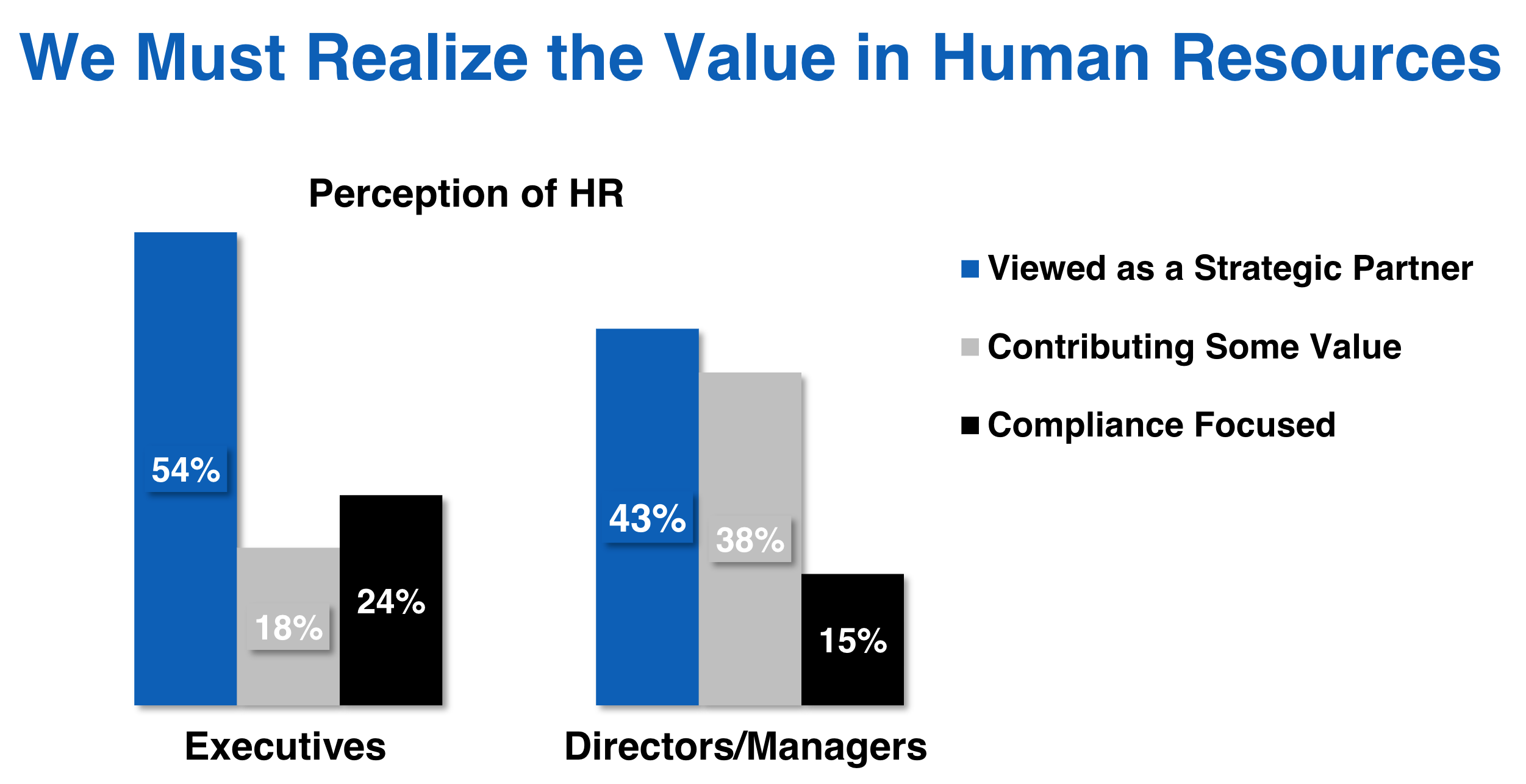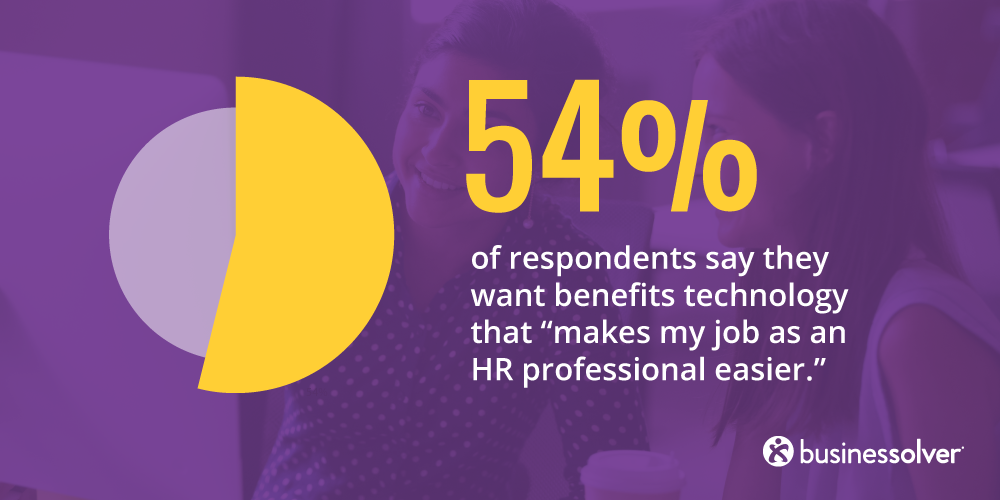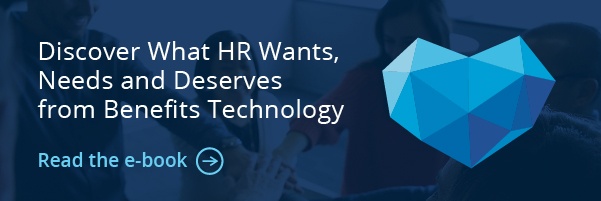When it comes to benefits administration, you should have software and services designed with an appreciation of your leaders’ expectations that HR deliver solid business outcomes.

It’s something we call “Technology with Heart.”
If you attended HR Tech earlier this month, you would have noticed an emphasis on HR’s role as a strategic partner in achieving measurable business goals. According to Stacey Harris, who presented on the findings of the most recent Sierra-Cedar HR Systems survey, “Efforts to transform HR over the last six years have resulted in a 20% increase in respondents who view the HR functions as contributing strategic value, with executives 25% more likely to view HR as strategic compared to HR directors or managers.”

The competitive landscape calls for strategic thinking
Your HR team works hard to develop, manage and optimize your dynamic workforce. With record-low unemployment, organizations are competing fiercely for talent while trying to meet evolving employee needs:
- 72% of employers are “extremely” or “very” concerned about losing talent.
- 73% of employees believe the right benefits increase loyalty to their employer.
- 57% of employers now offer a wider range of benefits to attract employees, including non-medical supplemental benefits like accident insurance, critical illness insurance and legal services plans.
In the war for talent, benefits are a key focus in the recruitment, engagement and retention strategies of savvy employers. And, with employee benefits contributing to 30% to 38% of your overall compensation spend, maximizing your investment in benefits is more critical than ever.
Benefits matter… to those in the know
Benefits matter in this tight labor market. But their power to attract, retain and engage talent is limited by one crucial factor: the degree to which your employees understand and value their benefits. In providing the right kind of educational support, HR has their work cut out for them.
- Benefits literacy is low. Over 80% of employees don’t have the knowledge to effectively compare options or maximize their benefits, resulting in their often being over- or under-insured.
- No one likes shopping for benefits. People spend a mere 17 minutes during Annual Enrollment making choices that will affect their paycheck and possibly their health for the next 12 months. Traditional, once-a-year engagement doesn’t work. Year-round communications and education are needed when and where your employees need it most.
- Employees need guidance and context. Truly effective benefits decisions happen only when options are presented to the employee as a “whole person,” taking into account their health, their finances and their emotional state.
- One size does not fit all. Employers often choose benefits that are designed to be administered to a broad population. While efficient, this means the benefits often fail to meet individual employee needs. Different life stages require vastly different benefits, and employers feel they are struggling to support their dynamic, multi-generational workforce.
Solving for these challenges and others
As a technology company in the people business—and one that was founded by HR professionals— we believe the best way to serve you is to understand the challenges you face and deliver solutions that are proven to help. It’s one way we stay true to our guiding principle of Technology with Heart.
In addition to analyzing our aggregate client data to uncover trends and develop a multi-dimensional view of the HR world, Businessolver has invested heavily in understanding the dynamics and the business impact of workplace empathy. Since conducting our first annual survey in 2016, we have produced and shared over two dozen thought leadership publications, including white papers, webinars, e-books, infographics and more.
Another way we get to know you better is through our annual blind survey of HR professionals and CEOs. Conducted by an impartial third party, this commissioned research aims to gather unbiased views on employee benefits technology and the industry as a whole. This provides us additional insight into:
- You and your unique challenges
- The support you want
- The tools you need to be successful
- The respect you deserve
Seven key characteristics uncovered
Our industry research and studies revealed seven key characteristics organizations look for when considering a benefits technology and services partner. They are:
- Effective HR User Experience
- Innovation that Delivers Results
- Consumer-Driven Employee Experience
- Platform Flexibility & Scalability
- Risk Mitigation
- Cost Control Support
- Greater Transparency
You can read about all these characteristics in our e-book, Technology with Heart. Here’s a taste of what you’ll find.
Effective HR User Experience

Our research uncovered that 54% of HR pros say they want benefits technology that makes their job easier.
As budgets tighten, teams shrink and cases of burnout increase, HR pros need technology and services that make it easier to meet their organization’s strategic goals. To add the kind of value leadership is looking for, HR teams want efficiency through automation and outsourcing so they spend less time on burdensome administrative tasks and more time on strategic initiatives.
A strong sense of teamwork helps HR maintain their good standing among current employees and alumni. So, their benefits administration partner must be an extension of their department and should deliver a high level of service. The wrong cultural alignment could diminish the employer brand HR has worked so hard to cultivate, while the right one will result in happier employees and more re-hires.
Learn more
Read about the six other characteristics HR pros look for when considering a benefits technology and services partner in our Technology with Heart e-book.



.png)